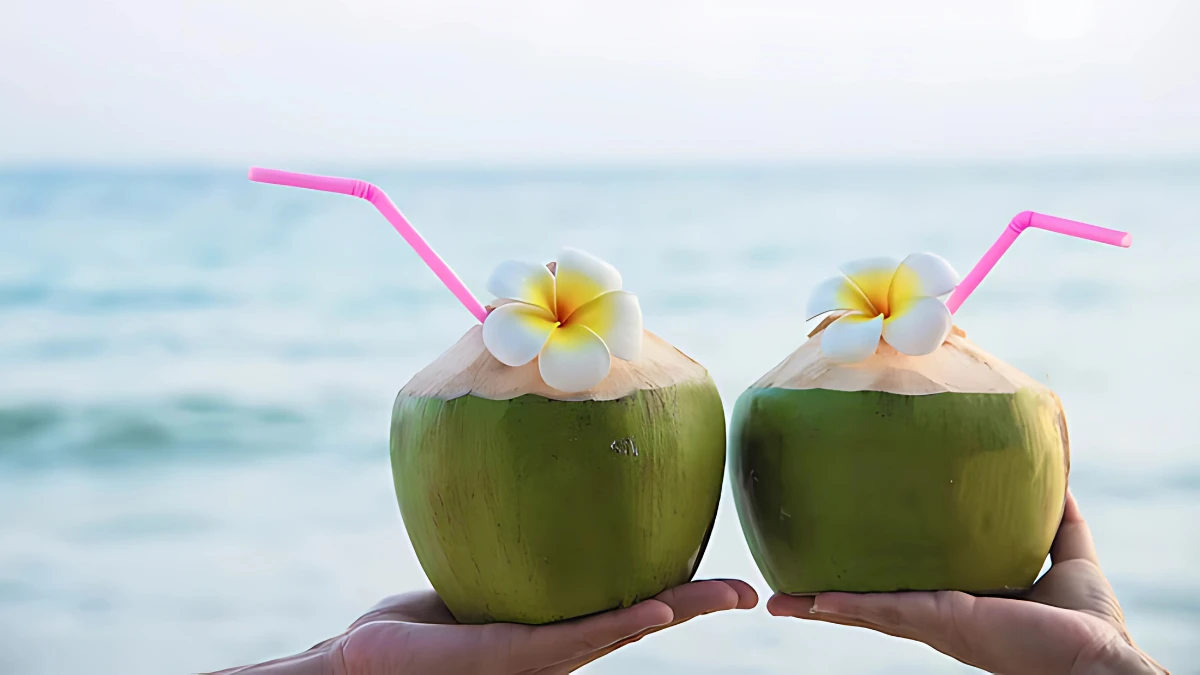We often take it for granted—cracking open a tender coconut on a sweltering afternoon, sipping its cool water straight from the shell. It's refreshing, hydrating, and has become a staple in wellness routines and street-side stalls alike. But few pause to ask: how does this fruit manage to store such a generous amount of water within its hard, fibrous shell?
The answer lies in the biology of the coconut palm and the ingenious way nature designed this fruit to thrive, survive, and travel.
Coconut Water: Not Rainwater, But Seed Nutrition
Contrary to popular belief, the liquid inside a coconut isn’t rainwater that somehow seeped in. Rather, it’s the result of a fascinating natural process. As the coconut fruit begins to form on the palm, it develops a liquid endosperm—essentially a nutritive fluid meant to support the growth of the coconut embryo.
"This water is rich in sugars, vitamins, minerals, amino acids, and phytohormones," explains Dr. Nirmala K., a plant physiologist who has studied tropical fruits for over a decade. “It’s nature’s own energy drink—designed not for us, but for the seed.”
The water forms as the fruit matures, initially accumulating as a clear liquid. Over time, parts of this liquid begin to solidify along the inner wall, forming the white kernel or coconut meat we eat. This transformation marks the fruit’s maturation—from the tender green coconuts prized for drinking to the brown, mature ones harvested for oil and cooking.
The coconut’s structure is far from accidental. From its buoyant, fibrous husk to its watertight shell, it’s a seed built for survival and dispersal. Coconut palms grow near coastlines for a reason: mature coconuts can fall into the sea, drift across oceans for weeks, and still sprout on distant shores.
In that journey, the water inside acts as both hydration and nutrition for the embryo if it takes root. In effect, what we drink as a trendy, tropical beverage is actually the early life-support system of a palm tree.
Tender vs Mature: What Changes Inside
The coconut goes through several stages of development:
- Young green coconut (5–7 months): Contains around 200–450 ml of water. The meat is soft, almost jelly-like.
- Mature coconut (10–12 months): The water volume decreases as the endosperm solidifies into thicker meat.
In commercial agriculture, especially in southern India and parts of Southeast Asia, coconuts are harvested at different stages depending on use—tender ones for drinking, mature ones for oil extraction, and intermediary stages for culinary purposes.
Fermented Drinks & Modern Twists
In recent years, coconut water has gone from a local staple to a global wellness phenomenon. It’s touted for its electrolyte content, low calorie count, and natural sweetness. Now, entrepreneurs and chefs are also exploring fermentation techniques, creating probiotic-rich drinks from tender coconut water.
“We’re tapping into ancient practices,” says Megha R., a Bengaluru-based beverage maker who uses wild fermentation to craft tangy coconut kefir. “Coconut water is already alive—it’s the perfect base for gut-friendly drinks.”
This rise in fermented coconut drinks reflects a growing awareness of natural, regional ingredients in contemporary wellness and culinary scenes. It’s a quiet revival of knowledge that was always there, hidden in plain sight—and sometimes, inside a coconut.
From coastal Kerala to Thai beaches, from street vendors in Chennai to chilled bottles in New York organic stores, the journey of coconut water is both humble and far-reaching. It is a reminder that even the simplest natural elements hold layers of science, culture, and sustainability.
Next time you sip from a coconut, take a moment to appreciate what you’re drinking—not just a summer cooler, but a miracle of plant evolution. A drink that began not for you, but for the palm’s next generation—and yet, ended up hydrating yours.






